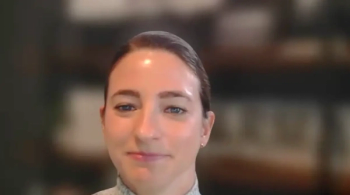
Immunotherapy Combination Treatment Potentially Effective for Lung Cancer
Progression-free survival was seen in 16 patients treated with a combination of nivolumab and ipilimumab.
Researchers in a new study found that a combination of 2 immunotherapy drugs, nivolumab and ipilimumab, could be effective for treating patients with small cell lung cancer (SCLC).
Currently, many patients with SCLC respond to chemotherapy but relapse and develop progressive disease with no effective treatments, according to a study published in The Lancet Oncology presented at the American Society of Clinical Oncology Annual Meeting.
Nivolumab can block the activity of PD-1 and ipilimumab can block CTLA-4. Both molecules the drugs target are found on T cells. This combination of the 2 drugs has already been approved by the FDA for treating advanced melanoma.
In the current phase 1/2 study, researchers evaluated the safety and efficacy of the drugs in 216 patients with SCLC who did not respond to chemotherapy.
Patients received nivolumab monotherapy or 2 different combination regimens of both drugs. Researchers found that all patients had longer responses than other experimental drugs, according to the study.
Approximately 10% and 20% of patients treated with nivolumab monotherapy and the combination therapy responded to treatment, respectively. Researchers also found that 16 patients had progression-free survival for over 6 months.
Only 13 to 330% of patients had high-grade toxicities associated with altered pancreatic enzyme activity, diarrhea, difficulty breathing, and lung tissue inflammation, according to the study.
There are 2 phase 3 studies being conducted to find the therapeutic impact of this treatment.
"This is the first trial showing activity of nivolumab and nivolumab plus ipilimumab in SCLC, in a hard-to-treat population of patients with limited treatment options," concluded study first author Scott J. Antonia, MD, PhD.
Newsletter
Stay informed on drug updates, treatment guidelines, and pharmacy practice trends—subscribe to Pharmacy Times for weekly clinical insights.


















































































































































































































